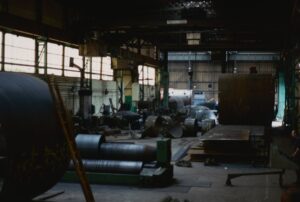Reducing downtime owing to machine faults and breakdowns is important for all industries, but with marine equipment typically being in a remote location, how do we react when problems occur?
Predictive maintenance, where data analysis is used to detect potential defects before a mechanical failure occurs, is the way forward. Here, we take a deep dive on how it works – and how it can be of benefit to the marine industry.
What is predictive maintenance?
The overall aim of predictive maintenance is to pinpoint potential faults in machinery at the earliest opportunity, with the goal of removing the need for more complex maintenance, repairs and even replacement.
Monitoring tactics allow potential failures to be spotted, and the part repaired or replaced before a full breakdown occurs. Predictive maintenance is more effective and efficient when used to monitor machinery or equipment that is more prone to breakdown. For example, older machinery or machinery that is critical to the output of the company.
Reduces downtime
Downtime in any industry is costly to the bottom line while there is a wait for repairs to be completed or a replacement to arrive, not to mention any further time required for installation and training on the new machinery.
The importance of reducing downtime is particularly prevalent in the marine industry due to the locations machinery is located in. Remote locations in the marine industry can often make repairs time-consuming and costly.
By having predictive maintenance in place, engineers can plan and replace anything effectively, rather than be forced to react at the last minute when something goes wrong. With travel from engineers often over large distances involving air travel, downtime can be lengthy and be very costly to the business.
Remote condition monitoring reduces travel and time costs
Using predictive maintenance will enable the scheduling of corrective maintenance when it is easier for it to take place. Having a way of predicting a failure on board a ship ensures that repairs or replacement parts can be installed before the vessel reaches open water – where it would be significantly more difficult.
This saves time, money and impacts on the health and safety of the workforce on board, as they are not entering operations with a potentially faulty machine or piece of equipment. Replacing valves, cylinders, or integral parts such as hydraulic cylinder parts needs to be conducted as efficiently as possible.
More efficient way of working
Generally, predictive maintenance enables a more efficient way of working. Avoiding last-minute changes because of breakdowns is just a better way for an organisation to operate.
Of course, not everything is predictable – the nature of the marine industry means that extreme, unforeseen weather can occur and cause problems that were literally impossible to predict or make contingency plans for.
Despite this, the ability to foresee problems and solve them before they become a huge issue is one that certainly improves business efficiency.
In conclusion
As with any industry, being able to predict when things may go wrong of breakdown can only be a positive thing.
The remoteness of some of the equipment, the difficulty of access to some locations and the expense of last-minute reactive maintenance are all important things to note.
When you add to this the significance of reduced downtime and even the impact on the health and safety of employees, we see how predictive maintenance can benefit the marine industry.






